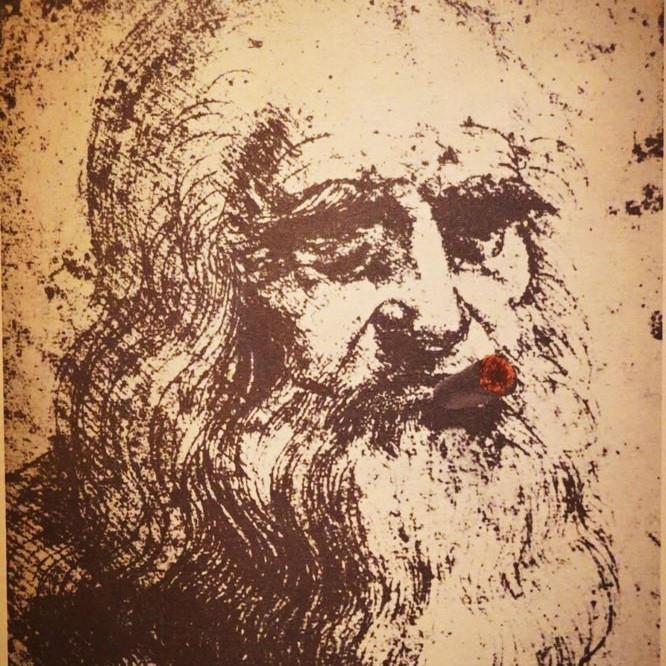The Father of Mona Lisa (from S.M.S. No. 3)
Man Ray (1890-1976) was the artist name for an American Emmanuel Radnitzky. In the early 1920s he came to Europe and soon became associated with the Dada and Surrealism movement. Man Ray is known for his experimentations, which he called “rayographs” as a word play by his name instead of the photographs. “Rayographs” are made without using a camera, instead he placed various objects directly on photosensitised paper and exposed it to light so that the objects leave their marks. “The Father of Mona Lisa (from S.M.S. No.3)” depicts the self portrait of the renaissance master Leonardo da Vinci from 1512, the creator of the world’s most famous painting “Mona Lisa” (1503). Man Ray’s artwork is basically his artistic answer to his friend and colleague Marcel Duchamp, who drew a mustache and goatee to Mona Lisa. Man Ray added a cigar to Leonardo da Vinci. Considering how technology allows people to manipulate visual culture these days, those two artists were truly ahead of their time playing with historical artworks.
Man Ray (1890-1976), kodanikunimega Emmanuel Radnitzky oli Ameerika kunstnik. 1920. aastatel tuli ta Euroopasse ja peatselt seostati tema nime dada ja sürrealismi liikumisega. Man Ray on tuntud oma eksperimentide poolest, mida ta ise oma nime järgi sõnamänguliselt fotode asemel “rayograph-ideks” nimetas. “Rayograph-e” tehakse ilma fotoaparaadita, nimelt asetas ta erinevaid objekte otse valgustundlikule paberile ja “ilmutas” neid otse valguse käes viisil, et objektid jätsid oma jälje. “The Father of Mona Lisa (from S.M.S. No.3)” kujutab endast 1512. aastast pärit renessanssi suurkuju ja maailma kõige kuulsama maali “Mona Lisa” (1503) autori Leonardo da Vinci autoportreed. Man Ray teos on sisuliselt tema kui kunstniku vastus sõbrale ja kolleegile Marcel Duchampile, kes Mona Lisale vuntsid ja kitsehabeme joonistas. Man Ray lisas Leonardo da Vincile omalt poolt sigareti. Arvestades asjaolu, kuidas tehnoloogia võimaldab tänapäeval visuaalset kultuuri manipuleerida, olid kõne all olevad kunstnikud oma ajast tõeliselt ees ajalooliste kunstiteostega mängides.


